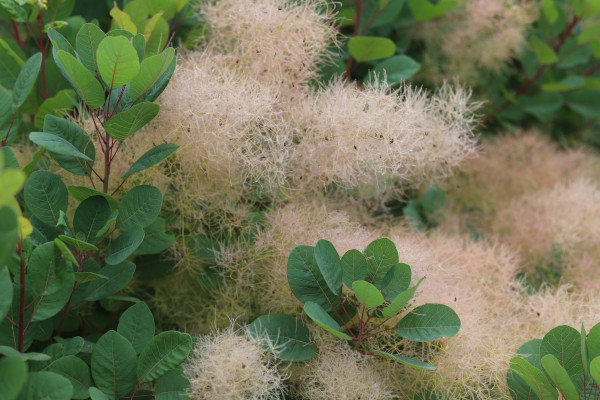How to grow Cotinus
Also known as smoke bush, cotinus is a small genus of deciduous trees belonging to the same family as cashew, sumac, and pistachio (anacardiaceae). It gets its common name from the hazy plumes of flowers in summer which resemble puffs of smoke, though it is usually the richly coloured, oval-shaped foliage for which this tree is grown. There are many different forms available ranging from apple green to deep purple, all of which put on a fiery autumn display, turning brilliant shades of red, yellow, and orange.
Cotinus can either be left to grow freely as a small tree or cut back hard to create a bushy shrub. The latter also increases the foliage size – young growth producing much bigger leaves than older wood. See more on this in our ‘Pruning and Deadheading’ section below.
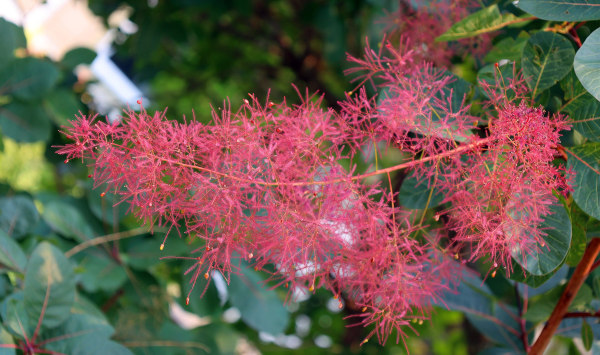
Zantedeschia is a genus of flowering plants from the family Araceae and is native to southern Africa. With a rich history dating back to the Ancient Romans, these deciduous or semi-evergreen perennials have been used as a symbol of celebration. Zantedeschia was Named after Professor Giovanni Zantedeschia, an Italian botanist.
There are two main forms of Zantedeschia: hardy and tender. Hardy forms of the plant can be grown outdoors, enjoy moist soil and full sun or partially shaded conditions - these are known as Arum lilies. Tender forms of Zantedeschia prefer being grown in containers or pots and should be brought inside over the winter - these are known as Calla lilies.
With tuberous flora in all colours from whites, yellows and oranges to deep reds and purples, Zantedeschias are not to be overlooked in any garden, as long as they have sufficient sunlight to grow in.
Ready to learn more about growing Zantedeschia? Read on for all there is to know...

Key Information
Soil pH
Position
Hardiness

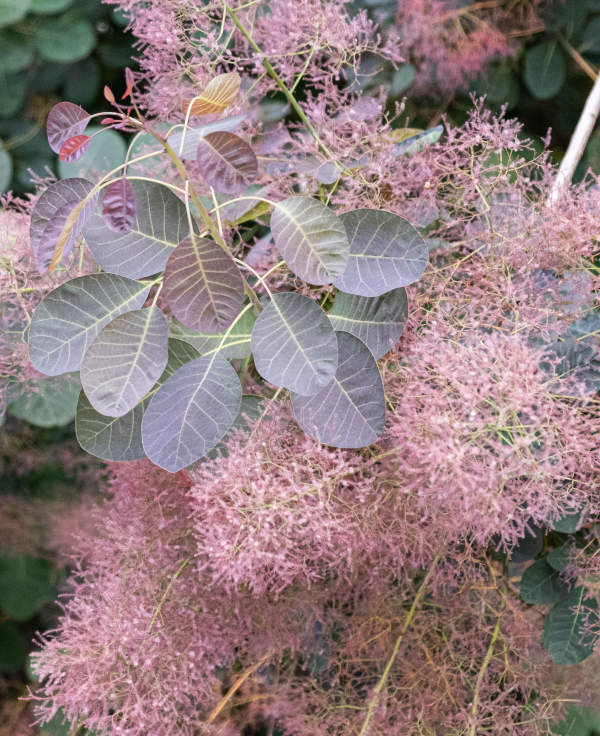
Where & when to plant Cotinus
Position - Full sun to partial shade. Purple-leaved forms are most intensely coloured in full sun.
Soil - Tolerant of a range of soils apart from the extremes of very poor and dry, or heavy and waterlogged. The ideal is moderately fertile, moist, and well-draining.
Flowering Period - Summer
Hardiness - Hardy, with most species rated H5 (-10°C to -15°C). This means fine throughout most of the UK even in a harsh winter.
Horticultural Divisions - There are just two species of cotinus. The European Cotinus coggygria is by far the most widely cultivated here in the UK, while the larger American species, C. obovatus, is more unusual.
Cotinus tend to be sold as container-grown plants. In theory, this means they can be planted at any time of year, though best results come from an autumn planting. Try to avoid planting in summer, as woody plants struggle to establish well from this.
Cotinus can be left to grow freely as a specimen tree or coppiced to create a smaller, multi-stemmed shrub which fits into mixed planting. Planting a group together has stunning effects, especially in autumn when its fiery foliage is at its most eye-catching.
Cotinus can also be grown in a container. Smaller forms are best for this, such as ‘Young Lady’ or ‘Dusky Maiden’.
How to plant Cotinus
- Water well and allow to drain before planting.
- Dig the soil area over, removing any large stones and weeds and breaking up any lumps. Mix in plenty of organic matter such as manure or garden compost.
- Rake level and firm with your heels. Rake level again.
- Dig a hole twice the size of the roots.
- Place the plant in the hole, ensuring the top of the root ball sits level with the surface of the soil. To high and the roots can dry out, too low and the stem can rot.
- Backfill with soil and firm in gently with your foot.
- Soak well with water.
- Mulch around the base with well-rotted organic matter such as manure or garden compost.
- For planting in containers (remember – compact forms are best for this), first choose an appropriately sized pot. The best practice is to start just a few centimetres larger than the rootball and repot into a slightly larger size every year or two. Always ensure there are plenty of drainage holes in the bottom.
- If you are using a large or heavy pot, it can be a good idea to fill and plant it in situ to save yourself the trouble of moving once full.
- Use a good quality potting compost with plenty of horticultural grit mixed in, and, if not already present in the compost (check the description on the bag) some slow-release fertiliser granules.
- Start by partially filling the pot with compost; enough so that when placed on it the top of the roots sits about 3cm lower than the top of the pot.
- Infill all the space surrounding the roots with compost, firming down with your fingers then adding a little more so the plant is held tight.
- Pick up the pot (if you can!) and lightly tap on the potting bench or ground a few times to help further settle the compost around the plant.
- Soak well with water.
- A mulch with horticultural grit will look attractive and help to prevent a ‘cap’ or crust forming on the top of the compost (something container plants can suffer due to the artificial nature of their watering).
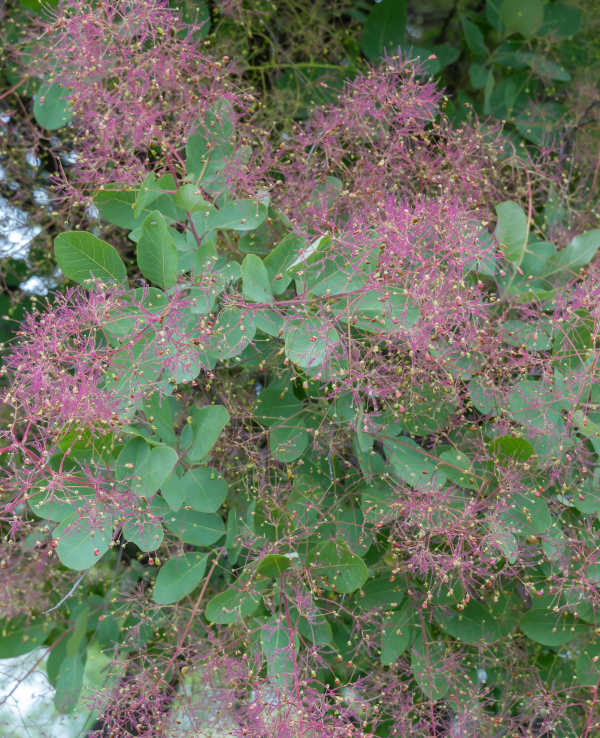
What to plant with Cotinus
Cotinus can be part of a powerful autumn flush in the garden, its vibrant foliage pairing beautifully with fiery companions such as cercis, acer, liquidambar, vaccinium, aronia, Euonymus alatus, and hamamelis.
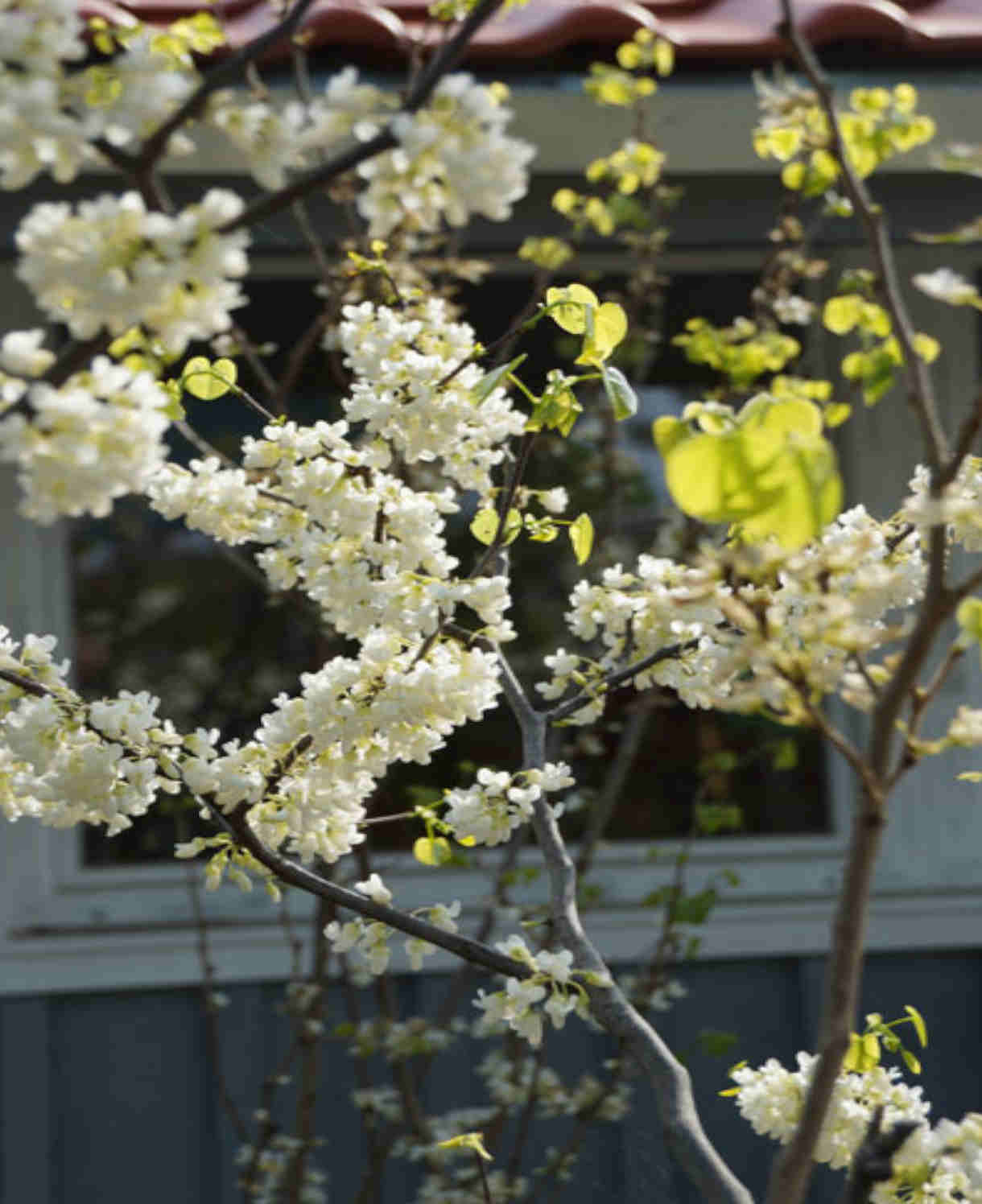
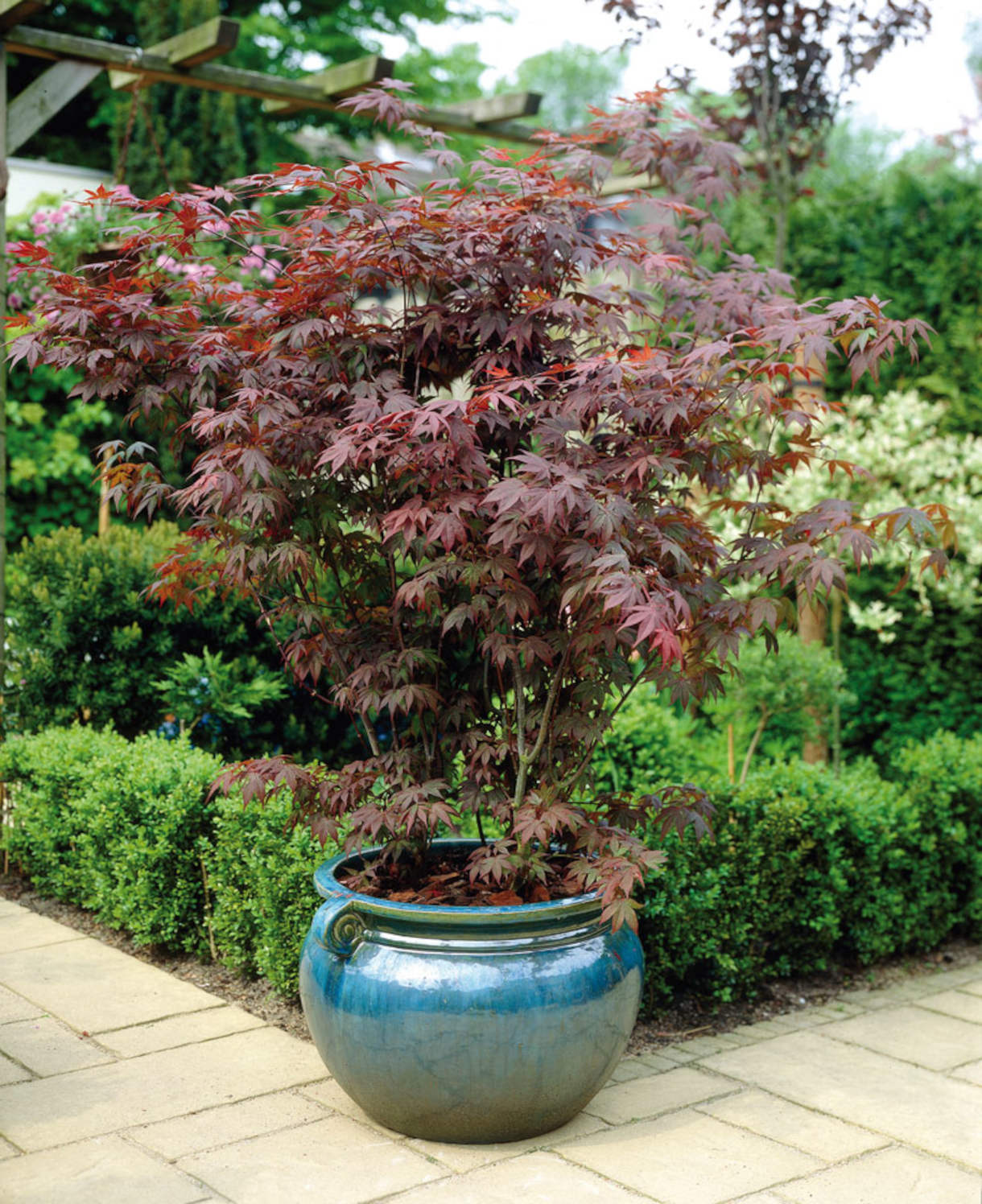
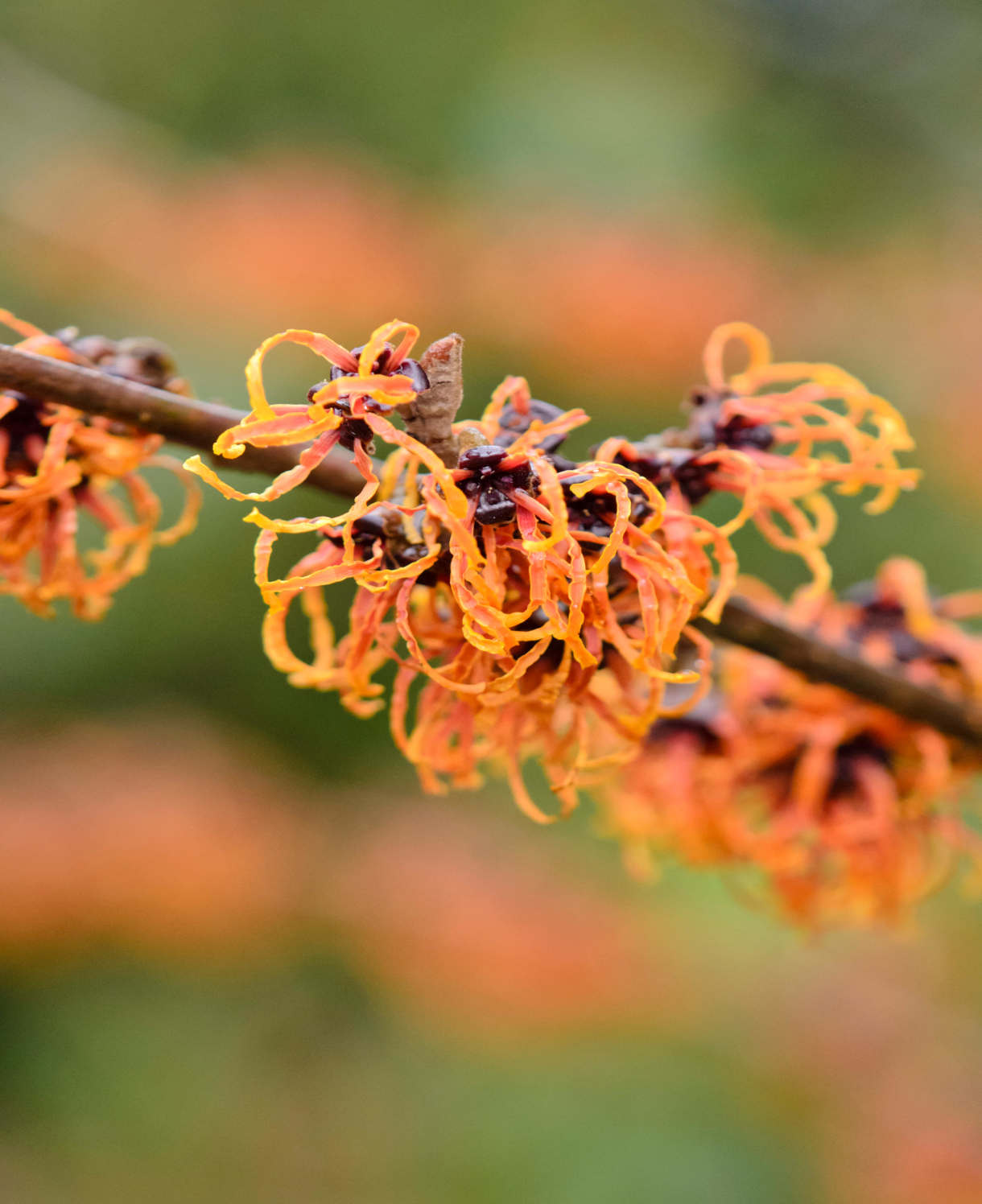
How to care for Cotinus
Pruning and Deadheading
Cotinus falls into RHS pruning group 1, which means no pruning is required if it is being left to grow freely as a specimen tree other than the occasional removing of dead, diseased, damaged, or badly placed growth. This is best done in spring.
An alternative approach is to prune cotinus back hard in late winter or early spring (RHS pruning group 7) to restrict its size and generate extra-large foliage. You can either coppice (cut down to just above ground level), or pollard (cut back to a set point, such as thigh or chest height). Coppicing creates a dense, bushy shrub, whereas pollarding allows you to raise the crown off the ground and grow plants underneath. Give your cotinus a few years to establish before starting this practice.
A note on cotinus flowers. While many gardeners enjoy the smoky floral haze, others just want the foliage and prefer to remove what they see as an unnecessary distraction. This is best done in late spring, before blooming gets going.
Watering
Like all woody plants, cotinus does best with regular watering for its first couple of growing seasons in the ground (to encourage root establishment). After this it should be largely self-sufficient, though it still pays to water in prolonged periods of hot, dry weather. An annual mulch is also useful for locking in moisture – more on this in our ‘Feeding’ section below.
Container-grown cotinus has less access to moisture and needs to be watered regularly throughout every growing season. Aim for infrequent big soakings, rather than little and often, allowing the top few centimetres of compost to dry out before each time. Try to avoid the compost drying out completely, being aware that this can happen in as little as 24 hours during the height of summer and sometimes even less for very full containers. From mid-autumn, the British climate tends to take over watering needs, though do remember to step in in the event of an unseasonably dry spell.
Feeding
On healthy, fertile soil, an annual mulch of well-rotted organic matter should provide sufficient nutrients for your cotinus. This has the added benefit of suppressing weeds and locking in moisture. Autumn and spring are the best times to carry out mulching.
For an extra boost (most needed in the first few years of the plant being in the ground; immediately after a coppice/ pollard; or annually if growing in poor soil), apply a general-purpose granular feed to the surface of the soil and lightly work it in. This is known as a ‘top dress’ and is best done in late winter or early spring.
Container-grown plants rely even more on the gardener for nutrition. Get off to a flying start by making sure you use a good quality potting compost, then throughout the growing season (March to September) apply a liquid feed every 3-4 weeks. Once the plant is in the largest container possible for the situation and repotting is no longer feasible, an annual topdress is advised. Each spring, scrape away the top 5cm of compost and replace with fresh, remembering to mix in a little general-purpose slow-release feed.
Cold Protection
Cotinus is usually hardy enough to withstand a UK winter without the need for additional protection. Having said this, like all plants those grown in a container can be more susceptible to the cold. If you are in a very cold or exposed spot, in can be worth wrapping these in fleece or hessian for the winter months. As well as insulating the roots, this will also help prevent the pot cracking in the frost.
Pests and Diseases
Cotinus can be susceptible to verticillium wilt. Purple forms may also develop powdery mildew.
Verticillium wilt is a soil borne fungal disease which can cause branch dieback, sudden wilting, yellowing of the leaves, and is confirmed by black streaking in the wood. As far as prevention goes, it is important to keep the surrounding area free of weeds, as these can act as hosts. Sadly, once infected, the only thing is to remove and dispose of the whole lot, including as much of the root system as possible. Take care not to spread infected soil around the garden on muddy tools and boots.
Powdery mildew is a fungal disease which appears as a white, powder-like coating on foliage and is generally a sign that a plant is stressed – often drought, though other causes can include poor airflow, over fertilizing, and insufficient sunlight. Prune off and dispose of any affected leaves and if necessary, thin out surrounding plants to improve airflow and light levels. Do not be tempted to give the plant extra feed, as this will generate an excess of soft, new growth which is particularly susceptible to the fungus.
How to propagate Cotinus
Cotinus can be propagated either by softwood cuttings in summer, or by layering in spring.
Softwood cuttings
- Snip cuttings off the plant, if possible taking a longer piece than the ideal eventual length of 5-10cm (to allow for trimming).
- Put in a plastic bag straight away to prevent drying out.
- Fill several pots with a well-draining compost mix.
- Trim the end of the cutting to just below a node (point at which leaves grow).
- Remove lowest leaves, leaving 2-4 on the cutting.
- Insert the cuttings into the compost and water lightly. Several cuttings can be put in the same container if there is enough space to do this without them touching.
- Place in a greenhouse or propagating unit if you have one or covered with a plastic bag on a windowsill if not (out of direct sunlight).
- Keep the cuttings misted and occasionally watered until they root. You will know this has happened when roots emerge out of the bottom of the container.
- Gently remove rooted cuttings and pot them into individual pots. Grow on in a cool yet frost-free environment such as an unheated conservatory, greenhouse, or cold frame, until they are large enough to be planted out.
Layering is a simple and effective technique which involves pegging a wounded stem to the ground to develop roots while still attached to the parent plant. It requires far less input than most other methods of propagation, as the plant is largely left to do the work.
- Choose a few flexible outer shoots that can easily be bent down to the surface of the soil.
- Make a 5cm long incision where the stem will touch the ground, ensuring you slice through a leaf bud.
- Insert a matchstick to wedge the incision open slightly.
- Dig a small, shallow trench where the shoot will touch the ground (adding a little grit if the soil is heavy).
- Peg the shoot into the trench using thick wire or a strong forked twig.
- Fill with soil, firm in, and water.
- Mark the spot with a cane. Roots can take 12 months to form, making it easy to forget what you have done and where...!
- When a good root system has formed, sever from the parent plant and either replant elsewhere or put in a pot for growing on.
* Many plants carry Plant Breeders Rights and cannot be propagated for commercial purposes.
Common Cotinus questions
Can you grow cotinus in a pot?
Yes, you can. Smaller forms are the happiest to be grown in this way, see ‘When and where to plant cotinus’ for suggestions.
Will cotinus grow in shade?
Partial shade is fine, though may mean a less vibrant leaf-colour (especially on purple-leaved forms) and fewer flowers. Avoid deep shade.
Is cotinus a good tree for small spaces?
Yes – it responds well to hard pruning (coppicing and pollarding), meaning it can be kept small and integrated into a border or small space.
